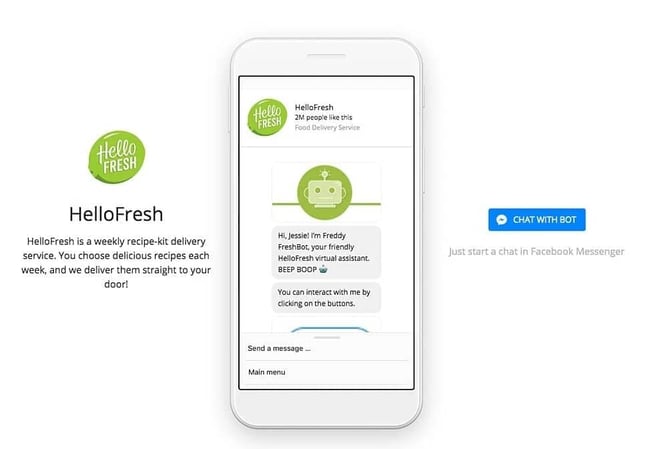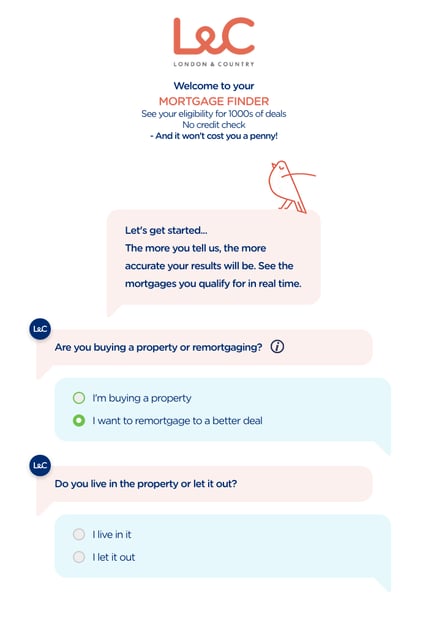Conversational marketing; is it just the latest buzzword? Perhaps you’ve heard that a conversational strategy can be valuable for your business.
But what does it mean exactly?
What are the benefits?
And how does it tie in with inbound marketing?
What is conversational marketing?
Conversational marketing refers to the ability to have one-on-one, personal conversations with prospects across multiple channels; live chat, phone calls, texts, email, Facebook Messenger and more.
It’s a new, personalised approach to doing business online, where potential customers can communicate with your company using any channel they choose.
Many companies are already using conversational marketing in a bid to deliver a better customer experience. Conversations with customers and prospects are nothing new. But we now have the technology to have one-on-one conversations at scale and across multiple channels - and that’s what conversational marketing is all about.
Is it just live chat and chatbots?
While the definition is quite broad, often people referring to conversational marketing are talking about live chat and chatbots. These technologies can be extremely helpful for people visiting a website and wanting a more personalised experience. It’s often faster to type a question in than it is to find the answer on your own. Research also shows that 77% of customers won’t make a purchase on a website if no live chat option is available.
But conversational marketing is more than just a live chat or chatbot on your website. It also means taking the conversation away from just your company’s website and bringing it into the space where your customers are. When customers are able to ask questions and get advice on a channel they’re already using to communicate throughout the day; that’s a new evolution of customer service.
Conversational marketing isn’t about a single tool, it’s about using the channel that best suits the customer. Businesses also need to be aware that what suits a customer one day might be different from the next, and they must be prepared to continue those conversations and retain the context across all channels.
What are the benefits?
Conversational marketing helps you to deliver a better customer experience by providing quick and easy access to support and advice. It makes for a more human buying experience when you're visiting a website and someone pops up and says 'Hello'.
And just like messaging apps help us talk to our friends more frequently, conversational marketing brings you closer to your customers by offering convenient and often 24/7 ways to get in touch.
Plus, you can gain a ton of insights about your customers. Lead forms collect contact information, but they aren't great at providing context. Conversations can easily show you what your customers want to do, learn, or change - in their own words.
What are the drawbacks?
I get it. You hear the word 'chatbot' and it instantly turns you off. You want to talk to a human, right? There's nothing more frustrating than when you're trying to get in touch with a company and you're put in touch with a robot who doesn't show you any warmth or empathy. But chatbots are just one element of conversational marketing. They're a good source of 24/7 support and answering quick questions, but they should never replace the option to speak to a real person.
Who’s doing it well?
HelloFresh
Meal subscription service HelloFresh launched the Freddy Freshbot chatbot in 2017, enabling customers to chat with the company through Facebook Messenger. Customers can access recipe ideas, meal reminders, and ask any questions all through Freddy.
The Freddy Freshbot is a great example of using conversational marketing to delight customers, taking it beyond the order and delivery process and ensuring customers get the most out of their subscription.

Domino's
Domino’s allows customers to order pizza through Facebook Messenger, Slack, Twitter, and text message. Customers can even set up an “Easy Order” on their Domino’s profile and place their order simply by sending the pizza emoji. Ordering a pizza has never been easier...
London & Company
If you’ve been through the process of applying for a mortgage, you’ll know how time-consuming, and often painful, it can be. This is why brokers London & Company designed a chatbot/messenger format to talk people through their Mortgage Finder form. For the prospective customer, it means no lengthy forms to complete, and for the company, it’s a great way to collect information and convert people into leads.

How does it fit with inbound?
The core ideas behind conversational marketing and inbound marketing are the same, and conversational marketing has become a key piece of inbound, just like blogging or social media marketing.
As HubSpot explain, “Inbound Marketing is all about creating value where your target customer is spending their time — that could mean writing a blog, interacting on social media, or sharing a video on YouTube. Now that technology has made conversational marketing a possibility, it’s a key part of inbound marketing.”
Conversations take place throughout the entire customer lifecycle. Conversational marketing therefore becomes a powerful tool for enhancing those important conversations that are required to move people along the sales funnel. For example, conversations can be used instead of forms to convert visitors to leads, and to turn customers into promoters by delighting them with quick access to support.
Conversational marketing isn’t going to replace things like lead forms, as there will still be people who prefer to take that route. But it does offer an attractive option for prospects who want a quick and smooth route to what they’re looking for.
Developing a conversational strategy
A conversational strategy builds on the concept of inbound and the end goal is to enable businesses to develop one-on-one relationships at scale. Actually putting this strategy into place is not easy, but HubSpot have come up with some helpful tips. They believe there are five things businesses should keep in mind when developing a conversational strategy:
- Personalise - conversations should be personalised with relevant shared knowledge
- Contextualise - conversations that have context improve the user experience by helping to minimise misunderstandings and getting straight to the issue
- Standardise - standardise elements of conversations to bring professionalism and consistency to your business, e.g. draft approved answers to your FAQs for bots and marketers to use
- Empathise - be human, show you understand the issue before moving forward with providing a solution, as this will make customers feel valued
- Optimise - learn from past conversations so you can improve them in the future
When done well, conversational marketing can help businesses to deliver a more personalised service throughout the entire inbound journey. However, it won’t completely replace the systems that marketers are already using, like lead generation forms, nor should it ever replace the ability to have in-person conversations.
Think of conversational marketing simply as another way to build better relationships with each of your customers at every stage in the customer lifecycle.


